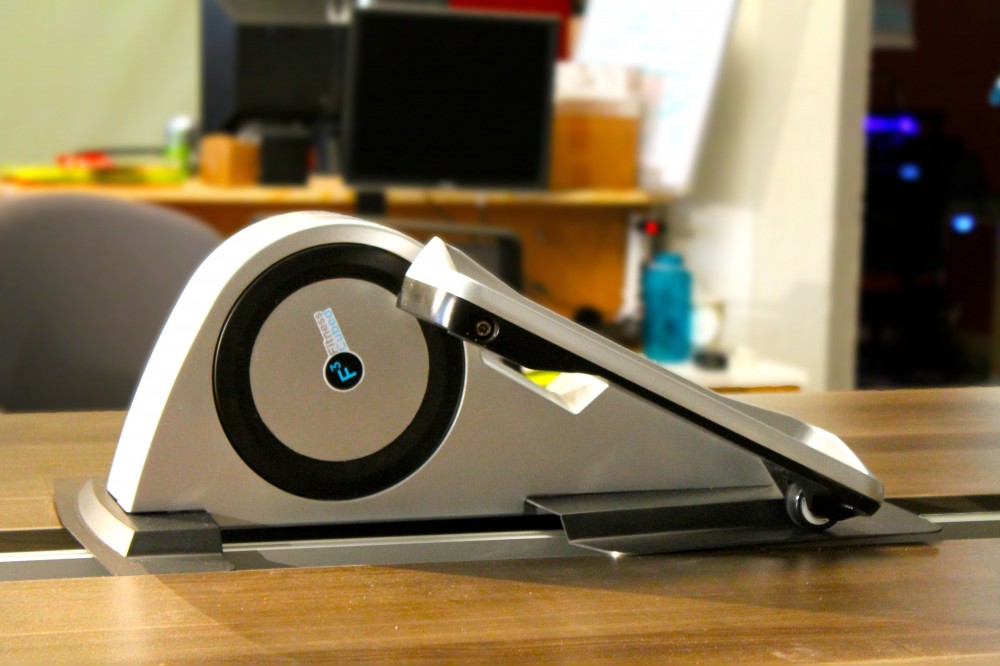Guest Post by Arnav Dalmia, Co-Founder, FitnessCubed*
Starting a company is challenging, but 2 years into running FitnessCubed, I would never trade my experience for anything else. In my first post, This is hard-ware, not soft-ware (Part 1), I discussed some additional complexities that can arise when it comes to starting a hardware company, relative to a software company. In full disclosure, I highly respect all founders irrespective of the nature of their company. Having started a hardware + software company, I encountered some unique challenges that folks in the software space may not have uncovered and the idea behind this post is to share my learnings so that founders contemplating a hardware + software company can avoid some of our pitfalls.
Part I of this two part blog post focused on our struggle as three non-technical founders in their early twenties, and what it took us to get from ideation to prototype to funding. If you’re interested, you can read Part I here.
For the benefit of readers who missed Part I, let me begin with a quick introduction to FitnessCubed. We build smart fitness products that integrate light exercise into a person’s life. Our first product is Cubii, a smart under-desk elliptical trainer that helps office workers stay active in the workplace. When we started, there was no compact, affordable fitness device for the office environment, so it was imperative to make one. We also wanted to ensure that Cubii plugged into the connected fitness ecosystem, so people could keep track of their exercise via a mobile app and sync with other fitness trackers. We launched Cubii through a crowd funding campaign that ended up being one of the most successful from Chicago in 2014.
After the crowd funding campaign and its immense success, we felt on top of the world! We thought we had crossed one of the biggest hurdles a company encounters in its existence: market validation. This sounds like a dream come true for most founders: you have an idea for a great product, you’ve developed a prototype, people love what you’re doing, and you have 3.5x the money you wanted. There was still something extremely critical that was missing from the formula for success. By the end of this post, I’ll let you figure out for yourself what is more important than market validation.
All that glitters is not gold
As a team, we were ecstatic by the success of our Kickstarter campaign. Like I said, we felt on top of the world! All the love and support from your backers on Kickstarter is just awesome and the feeling stands unparalleled. While we were off to a great start, there is a saying, all that glitters is not gold. Very quickly, we got over the excitement of raising $300k and came to terms with reality.
Cubii received the support of 1,070 backers on Kickstarter. This also meant that we were now answerable to 1,070 individuals. We had 1,070 promises to fulfill. People had trusted us with their money, and we knew we had only one shot at it. No one on the team had prior manufacturing experience, so this was literally our first and only shot. We had just graduated from college, and unconsciously, we had put our entire careers at stake. You’re on an international platform, the world is more connected than ever, and it takes seconds to bring you up or pull you down. The Central Standard Timing campaign blew my mind when I first saw it! They ran into some issues, but I know how much effort the founders put into it. Not everyone empathized in spite of all their hard work. The story is no different with the Everpurse campaign and what followed.
Very often creators don’t get credit for the hard work they’ve put into a project. Every creator gives their project their 100%. Think about it: you don’t launch a crowdfunding campaign to make money – you’ll be extremely lucky if you’re in the green after completing your campaign. The success of a project depends on a number of factors and often times, most of these factors are beyond your control.
Almost always, the glamorous part of crowd funding is flaunted, and the social pressure on founders neglected. Quite honestly, with Cubii we were blissfully unaware of the stakes involved! The takeaway from our experience is that I highly recommend founders consider all aspects of crowd funding before making a decision on whether it is the right path to go down for their business. Definitely try and watch this accurate documentary on crowd funding if you can: Capitol C.
Trust and partnerships
So with Cubii, we unconsciously landed ourselves in a highly stressful situation. There was no looking back now – we had to make the product and live up to the promises we had made. We knew we couldn’t do it alone, so we started a hunt for a manufacturing partner. To say the least, this was not a very pleasant experience. Three months after our crowd funding campaign ended, our first manufacturing partner came up with a cost that was three times where we needed it to be for us to stay afloat. We restarted our search and were introduced to a contract manufacturer that we felt very comfortable with. Three months into conversations, the relationship went nowhere; the manufacturer was not interested and found our volumes too small, and unfortunately it took them three months to get this message across. Six months had passed since the Kickstarter campaign and we had failed a second time. Pressure from backers kept building up. At that point, I booked a one-way trip to China, and I made up my mind to stay there until we could get the ball rolling. Initially we were very selective with our vendors, because of the “fear” of someone copying our idea. One of my Professors once said, “ You’re not the right person to do it if you’re afraid about someone copying you”. With that belief, we went ahead with full force. Our efforts finally paid off and we found the right partners to work with.
During our design phase in the US, we were always told – ‘Tell the Chinese what to do, and that is all they will do’. I think there is a major problem with this statement. Often times, folks sitting in the West undermine the expertise and experience gathered by the Chinese from years of developing products. We are too used to shipping our design to China, and hoping it will get made exactly as per spec. If you’re Apple, that might be true; however more often than not, things do not work that way – especially if you’re a startup. Through years of experience developing products, Asian factories can tell what will work, and what won’t. They can suggest improvements to the product that might not be obvious, but are very practical in nature. In short, you cannot treat a factory like a computer and expect a great output solely based on your design input. Factories are driven by people, and it is important to develop a true partnership. We highly leveraged the expertise and experience of our factory. We asked them for suggestions and respected their thought process. This not only made them feel more comfortable making the product, but also made them more excited and eager to work on the project.
Selecting the right partner is absolutely critical; we learnt two big lessons in that process. Speak to as many people as possible early on in the project. Like I said, if you’re always afraid about people copying your idea, there is a problem. In fact, the way I look at it, the more the competition the better. It expands the market for everyone! It’s critical to spend as much time as possible on the ground with your partners. Over the last six months, I’ve probably made more than 6 visits to China and spent almost 3 months there. Secondly, it is very important to treat your supplier like a partner. Their success lies in your success, so it is best to engage in transparent conversation, seek their advice, and give them the due respect that they deserve.
Let’s accept it, sh*t happens!
I’m sure any entrepreneur can vouch for this. Lets accept it, things happen that are outside your control! Who knew that six months would pass by, and two manufacturers would back out? Keeping professional problems aside, there are personal problems one could run into. When you have a small team to begin with, they have a direct effect on the company. After the Kickstarter campaign ended, I injured my back and was advised bed rest for two months! Another partner had a family emergency that required his immediate attention. The truth is that we are very optimistic while starting something new, but in reality, things happen that are beyond our control. I cannot imagine telling our backers that we’re off schedule because I injured my back or another partner had a family emergency. You set the expectation for your backers and it’s your job to ensure that their expectations are met.
When you’re working in a small team, issues are bound to come up, and even a small issue can aggravate due to its repercussions. Founders can try to mitigate the risk of such situations by managing expectations realistically and building a substantial buffer for unforeseen situations.
Keep hustling
After 18 months into the project, massive pay-cuts, 2 manufacturer bailouts, countless design changes, unanticipated Chinese escapades, and an injured back, I’m just thrilled by the fact that our team is still going strong! I’m on a plane in China as I complete this post. It’s been six weeks since I’ve been here, and I have another three weeks to go before we ship out the first batch of units to our backers. Through our lessons, I hope you’ve figured out what is more important than market validation. It is execution. You might have the best idea and a ton of validation, but it is all contingent on successful execution. It’s tricky because while there are many things under your control, there are some that can never be. I just have one mantra – keep hustling!
 *About the author:
*About the author:
Arnav Dalmia graduated from the University of Chicago in 2013 with a degree in Economics. He founded FitnessCubed while still in college. FitnessCubed’s first product, Cubii, was 367% funded on Kickstarter, raising almost $300,000. Cubii touches a pain point recognized by many and drew the attention of national media as well as Chicago’s Mayor Rahm Emanuel along with support from the Clinton Foundation.

